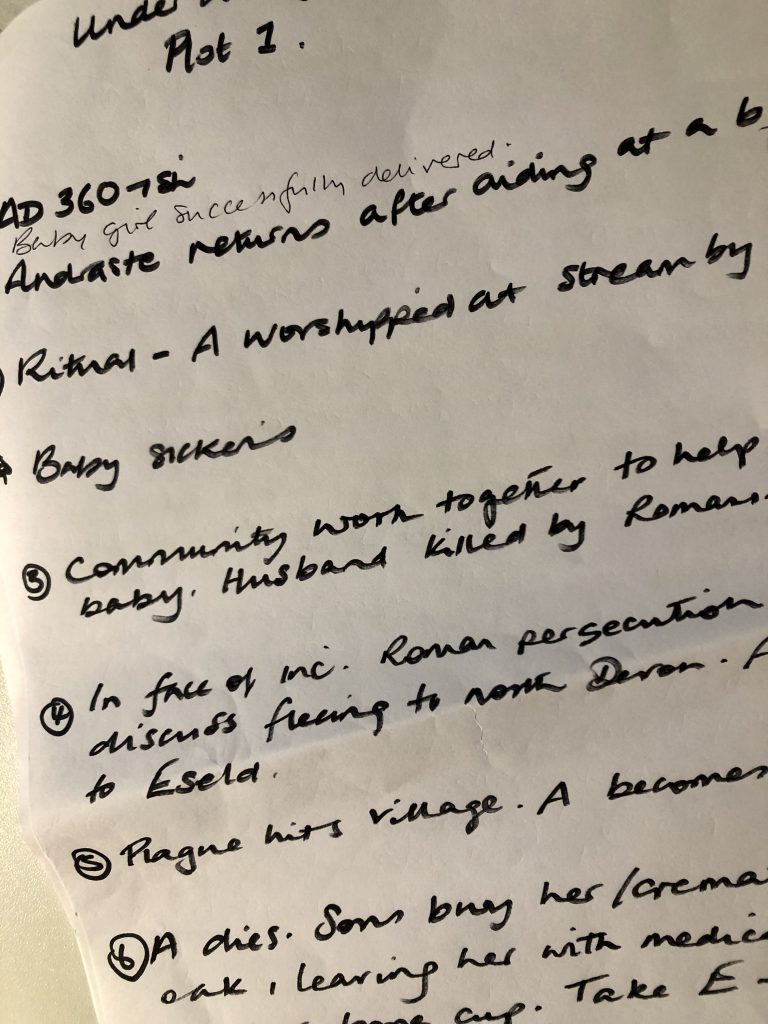How I plan came up during the recent Snow Prose session with the lovely Suzanne Snow. I mentioned that I’d maybe blog on how I plan, and my writing and editing process. I’m not saying it’s the definitive method but it works for me and it might for you. Here goes:
1) The seed of an idea begins with characters, their names, the setting. At this stage I quite often begin to gather pictorial clues. Occasionally, a character has been inspired by a single photograph and, in the case of Jago Pengethley, his name. Sometimes I add the pictures to a planning book, more often lately I use Pinterest. The image story board gets added to throughout the writing process and referred to when I’ve forgotten what my character looks like! Pinterest can be a great tool but is USA-centric and less useful for images of the non-beautiful.
2) Find or buy a new notebook. Great fun! It gets divided up under headings such as Research, Characters, Possible Names, Notes on Places and far, far more. There’s also a section devoted to a chapter-by-chapter synopsis which is added to during the first draft and has a words total for motivation. However, I don’t usually need any motivation at this stage as I love the first draft process.
3) Planning by Post-its. Once I have a fairly good idea of what the story will be, I map out the main plot points on Post-its. Only the headlines of the plot, if you like. You can use different coloured ones for different character arcs or subplots depending on how the story is panning out. Every book is different and requires a slightly adapted planning method. I begin at the end with the story’s finale and work backwards from there, keeping the three-act story structure in mind. (Keep them, they can come in handy when you have to write the dreaded submission synopsis).
4) I write notes from the Post-its onto a crib sheet with numbered points. It gives me an outline from which to work and avoids the, ‘What am I going to write next?’ dilemma. This used to happen to me a lot when I was working at something other than writing and couldn’t write every single day; I’d easily lose the thread of what I was writing. If I’m writing one of my dual narrative stories then I have two crib sheets running concurrently. I’ve made life extra challenging with the work in progress as there are three story lines! I print out (when my printer’s working) the sheets and have them to hand at all times – to amend and tick off. The crib sheet also gives you a sense of where you are in the story and where you’re going with it. Hopefully.
5) Begin writing the first draft, following the crib sheet. Inevitably this gets changed and scribbled on as I’m writing, and the end result differs from the plan. For me, this is usually a fairly swift process if I put the work in and affix bum to seat. At this stage I always number chapters, even though it’s a pain when it comes to editing and you have to change them. It makes it easy, however, to find a particular chapter if you need to edit during the first draft. I’ve also found it useful to head the chapter, Chapter 9 July 2018, or Chapter 10 August 1660 as, when you click on Find on the pc it gives you a useful running timeline. Handy, if like me, you write complicated or tight timeframes. New Beginnings at Christmas Tree Cottage took place over a period of about five weeks so the structure was extremely tight and a chapter could take place over one day. The next book is over six months so looser but the timeframe is equally crucial. At the end of the first draft, write The End. You know it’s not but it’s a reward of a kind and it’s always good to type those words!
6) Stick in a drawer or leave on the pc for a while if you have the luxury of time.
7) Revisit, with the classic three-act story arc in mind and analyse. Repeat with your character story arc. Ensure your character is not the same person she was at the end as she was at the beginning. Otherwise, what’s the point of your book?
8) Second draft. This is where I add speech punctuation and description which is often missing from my first draft as I’m in too much of a hurry to get the story down.
9) Third draft. Add flavour and colour. Use stronger words, add in the senses, make your story come alive.
10) Fourth draft. Using Find and Replace check for repetition of words and phrases (it’s often horrifying how much I repeat!). Also check for key words and phrases that distance your reader: noticed, tried to, knew, saw, realised, remembered are often culprits. While you’re at it, make sure your spelling and punctuation is consistent. If you’re using UK English, use it throughout.
11) Give it to a trusted beta reader. Listen to their advice and adjust.
12) Read through one last time. Submit and begin to pray!
I hope this has been useful or stimulating. Let me know if it has, or if you have a far better method. I’d love to know!
Love,
Georgia x







